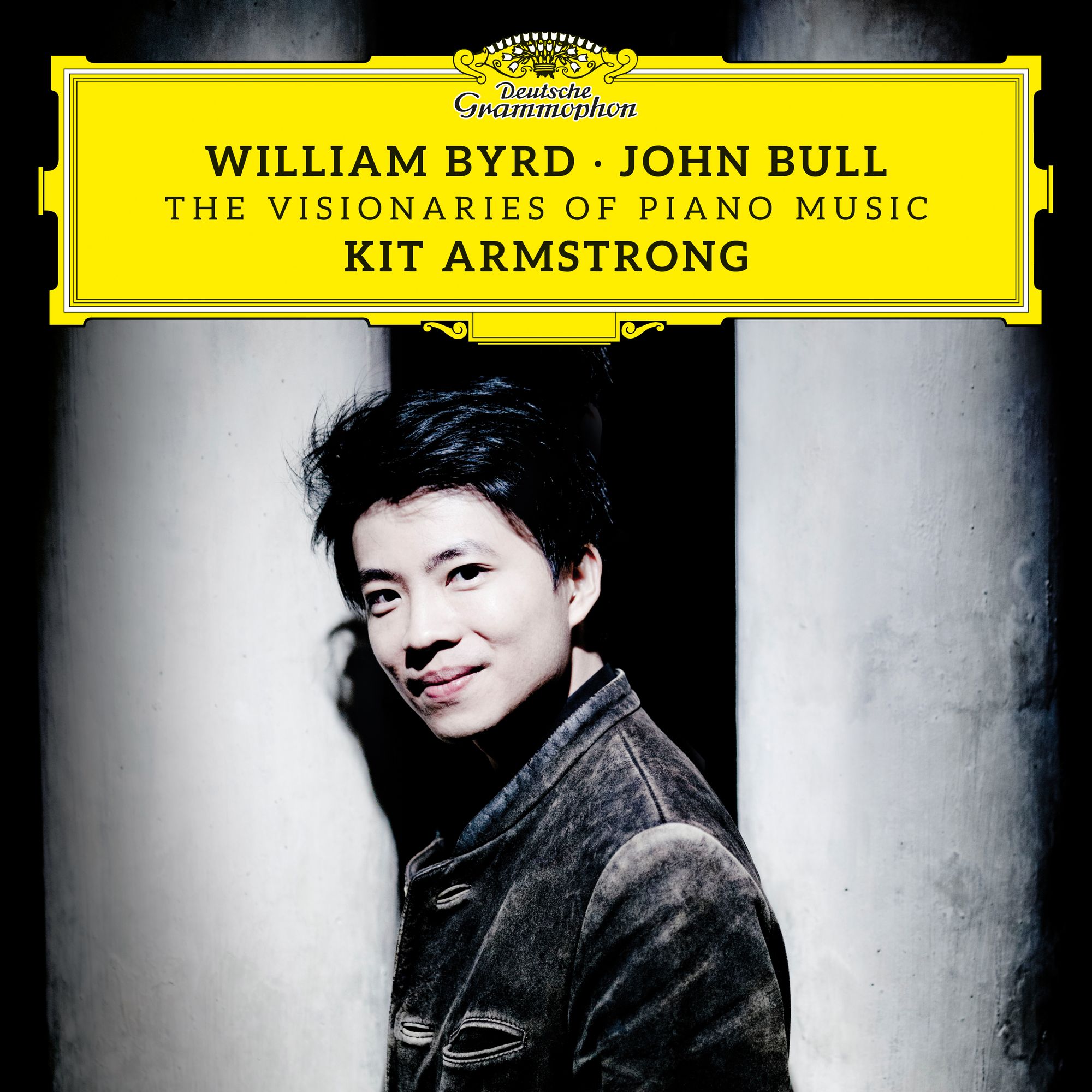"The Visionaries of Piano Music": Kit Armstrong plays Byrd and Bull

The title "The Visionaries of Piano Music" is the title of this disc; it is also slightly misleading as neither William Byrd (c. 1539/40) nor John Bull (1562/3-1628) actually worte anything for the piano. But playing the m on a modern grand is no sin; and Kit Armstrong, in his liner notes, places himself in the lineage of Glenn Gould (whose recordings of Gibbons are strongly recommended, incidentally: this link takes you to a 1968 Toronto recital of Gibbons, Hayden and Hindemith). Armstrong himself introduces his ideas behind the project here:
The variety on display here is amazing: the graphic depiction of flute and drum for instance in The Woods so Wild (a set of 14 variations by Byrd) is great fun:
He brings life to this – and some sustaining pedal which makes it very much of the piano. Whether one agrees with that or not, his ornaments are perfectly crisp and at times of the ultra-rapid type the Elizabethans require.
On the other side of the coin his how well Armstrong catches the lachrymose side of this music well – try Byrd’s Pavan Sir William Petre or The Maiden’s Song (which latter actually ends up incredibly active, with a very even running left hand). Here's Pavan Sir William Petre:
... and here's The Maiden's Song:
Music by John Bull is sandwiched between two groups of Byrd pieces, This is magnificently quirky music. try the first Fantasia (with its obsessively repeated left hand; Armstrong really lets the end resonate on):
Most intriguing of all is the quizzical, enigmatic set of canons; there’s even a carol/prelude “Laet one met herten reijne,” while the joyous decorations of “Les Buffons” seem the perfect antidote to all 21st century tribulations. Armstrong is not afraid of a bit of staccatissimo, too. Bull‘s Walsingham builds to a great climax – in Armstrong’s hands, it is almost a tone poem:
When we return to Byrd (Earl of Salisbury’s Pavan), we really hear the difference between the two composers, a gentility and interiority in Byrd against the exuberant experimentalism of Bull. The final item of the first disc, The Bells has a surprisingly restrained ending – decidedly thought-provoking:
The second disc holds the astonishing two-minute My Grief by John Bull, an expression of unbearably concentrated pain:
Byrd’s O mistress mineseems the ideal complement. Most fascinating of all is a set of Bull Canons: the title may sound dry, but the music is anything but. They are nice and contrastive, too, some of Webernian brevity and import; some are quizzical, almost like the end of Art of Fugue! Here's the first set Armstrong presents:
How fascinating also that the two Walsinghams, one by Bull and one by Byrd, occupy parallel places on the two discs!
Those who enjoy Bach on the piano (more Martha Argerich than Gould, to be fair) will enjoy these performances, preserved in superb sound and with thought-provoking booklet notes.
